#middle passage
Text

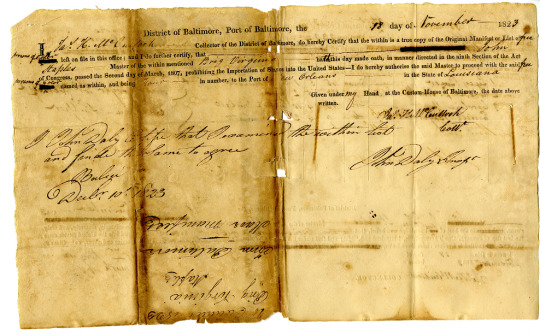
Manifest for Brig Virginia of Baltimore
Record Group 36: Records of the U.S. Customs ServiceSeries: Slave ManifestsFile Unit: September 1823-December 1823
MANIFEST of Negros, Mulattos, and ^free persons of Color, taken on board the Brig Virginia of Baltimore - whereof John Staples - is Master, burthen 23.9 - tons, to be transported to the Port of New Orleans - in the District of Mississippi - for the purpose of ^Residing in the City of New Orleans [struck through: being sold or disposed of as Slaves or to be held to Service or Labour] Sex. Height. Number of Entry. Names. Male. Female. Age. Feet. Inches. Whether Negro, Mulatto, or person of Color. Owner or Shipper's Name and Residence 1 Lucy Boyer Woman 45 5 1 light mulatto Lucy Boyer for Herself & children--Shipper 2 Robert D. Smith Male 19 5 2 brown 3 Caroline Boyer Girl 13 4 10 lightish mulatto Emily Boyer do. 9 4 2 light mulatto District of Baltimore, Port of Baltimore, the 1 day of November 1823 [illegible - struck through] I John Staples - Master of the Brig Virginia - - do solemnly, sincerely, and truly swear [struck through: each of us] to the best of our ^my knowledge and belief, that the above described persons of Color have not been imported into the United States since the first day of January, One Thousand Eight Hundred and Eight; and that under the Laws of the State of Maryland, they are not held to Service or Labour, as Slaves and are entitled to freedom under these laws, [illegible, struck through]--So Help me God. her Sworn to this 18 day of Lucy [hand drawn X] Boyer November 1823 before mark Jas. H McCulloch COLLECTOR.District of Baltimore, Port of Baltimore, the 18 day of November --- 1823 I Jas. H. McCulloch Collector of the District of Baltimore, do hereby Certify that the within is a true copy of the Original Manifest or List of ^free persons of color^, left on file in this office; and I do further certify, that [illegible, blacked through] John Staples --- Master of the within mentioned Brig Virginia ----- ha^th[struck through: ve] this day made oath, in manner directed in the ninth Section of the Act of Congress, passed the Second day of March 1807, prohibiting the Importation of Slaves into the United States --- I do hereby authorise the said Master to proceed with the said free ^persons of color [illegible, blacked out] named as within, and being Four ---- in number, to the Port of New Orleans ---- in the State of Louisiana Given under my Hand at the Custom-House of Baltimore, the date above written. Jas. H. McCulloch Coll.r [Collector] [Handwritten in black in to lower left of McCulloch's signature] I John Daly [Certifie?] that I examined the within list And finde the Same to agree John Daly Inspr [Inspector] Below Decbr (December) 10th 1823 [written upside down] 10 December 1823 Brig Virginia Staples From Baltimore Slave manifest
18 notes
·
View notes
Text
Errors and Bias in State-Sponsored Summer Teacher Training
This summer in Florida the governor, Ron DeSantis, enacted the next part in his plan to mutilate the public education system. There were many issues with this teacher training. Notably a focus on "originalism" as the only correct way to read the constitution and a rejection of strict separation of church and state. This framing of history is tailored to support right-wing politics and Christian Nationalism. The presentations included slides for teaching “Qualities of an Upright and Desirable Citizen” and a section titled “Misconception: The Founders desired strict separation of church and state and the Founders only wanted to protect Freedom of worship.” (Focus on "what the founders want" and "what the founders could imagine" is baked in to this framing. Even then this is hardly an area of consensus among historians.)
I'd like to focus on how slavery was presented. Very little was said to teachers about slavery at the training. So, what was said is even more important. The little information presented was selective, using intentional errors to push an ideological narrative. Consider this slide from the teacher training Slave owners Washington and Jefferson are selected as the best people from their time to articulate "Opposition to Slavery" (couldn't think think of anyone better to quote on this topic? anyone more relevant? Maybe someone who didn't have a vested interest in slavery?):
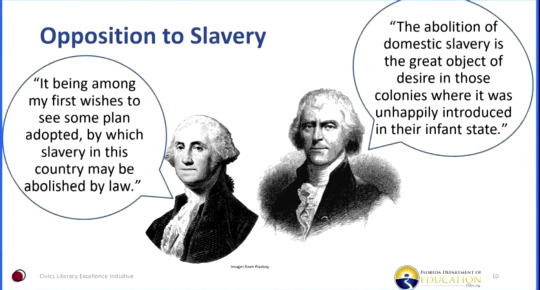

The quote attributed to Washington is mangled!
Washington never even said this quote as presented. He said something similar, true, but the tone of the real quote is very different.
" ... abolished by law." should be
" ... abolished by slow, sure, & imperceptable degrees." (source)
This is, presumably, the very best quote they could find from Washington.
Another slide on slavery from the teacher training:
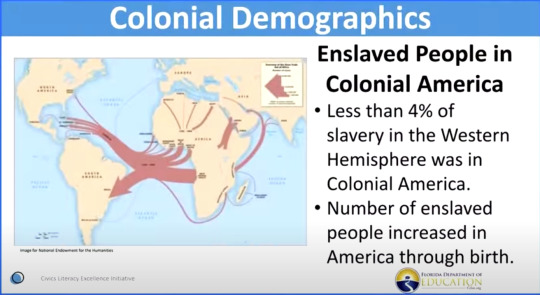
No major factual errors in this one, but factual errors aren't the only way to introduce bias. Considering how little was said about slavery what impression would these facts leave?
Why is it important to mention that the number of slaves "increased in America through birth?" Is the implication that being born into slavery is a different kind of moral evil than being trafficked directly from Africa?
Teachers in FL (and all states) should absolutely teach about these slides. In media literacy context of course! It's possible to push an agenda in many ways. By selecting what to present and what to ignore, through inaccuracies, by framing statistics in a misleading manner and placing facts together to lead the reader to an unspoken conclusion.
This is terrifying. It joins the attacks on LGBTQ communities and especially the eliminationist rhetoric and legislation targeting trans people. Florida is going in a very dangerous direction. Ultimately, the plan is to drag the whole country along with them.
I firmly believe we can stop this from happening, but I do not think it will be easy.
Sources:
New Florida teacher training downplays role of slavery in U.S. history
Florida curriculum trainings show teachers how to make students ‘desirable citizens’
New Florida curriculum training goes from Civil War to Civil Rights, skips over Reconstruction
‘Mind-blowing what they tried to convince us of’: Florida teachers on new, ‘very skewed’ curriculum
#florida#republicans#slavery#us politics#history#teaching#lies#bias in education#history teacher#ron desantis#desantis#governor desantis#fuck desantis#governor#education#middle passage#slave trade#george washington#thomas jefferson#founding fathers#media bias#history is written by the victors#scotus#originalism#christian nationalism#far right#conservatism#right wing#christofascism#evangelical christianity
108 notes
·
View notes
Photo



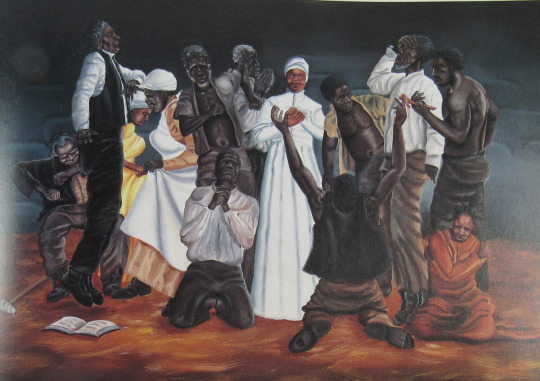
The book From Slave Ship to Freedom Road presents a series of paintings by Rob Brown that portray the story of slavery from its beginnings through the middle passage to hard-won freedom. Author Julius Lester not only reveals factual information about slavery to his readers, but challenges them to imagine the pain and grief through short exercises & questions.
#Slavery Remembrance Day#slavery#slave trade#black history#middle passage#Julius Lester#Rob Brown#American history#African-American history
100 notes
·
View notes
Text
WRITEN ON MY 53rd BIRTHDAY (@ Culebra, Puerto Rico)
Unlike Clitastan, I can’t find Crone Isles
on a map. Perhaps here, Auntie? Perhaps.
Where do wise women—the outlaws, exiles,
masterminds of Patriarchal collapse
— sashay off to when they sashay away?
Crone Isles. Audre Lorde called Saint Croix home.
From here the sun sinks behind El Yunque.
Across the waves drowned draug lights, or sea foam,
perhaps, glint. I’ve lost so many mothers,
communities, friends. Auntie, if I call
will you hear me from where your bones were lost
during Middle Passage? We’re the others
never to be Crones; without isles, locales
or home. With no way of making it across.
__________________
Notes:
While there is an actual island called Crone in Alaska, this Pop Culture reference deals with a mythical island where all the cool older firebrands and rebels retire to. Author of the poetry collection, The Black Unicorn (1978), Audre Lorde referred to herself as a, “Black, lesbian, mother, warrior, poet.” Saint Croix is part of the US Virgin Islands. El Yunque, on Puerto Rico, is the only tropical rainforest in North America. In Norse mythology the Draug were the souls of drowned fishermen lost at sea. Middle Passage refers to the Transatlantic Slave Trade; of the 12.5 million Africans carried across the Atlantic on an estimated 40,000 slave-trading voyages between 1519 and 1865, at least 1.8 million perished under horrendous conditions on the two-month voyage and were thrown overboard.
#my birthday#sonnet#culebra#puerto rico#birthday poem#spilled ink#middle passage#crone isles#audre lorde#saint croix#el yunque
24 notes
·
View notes
Text




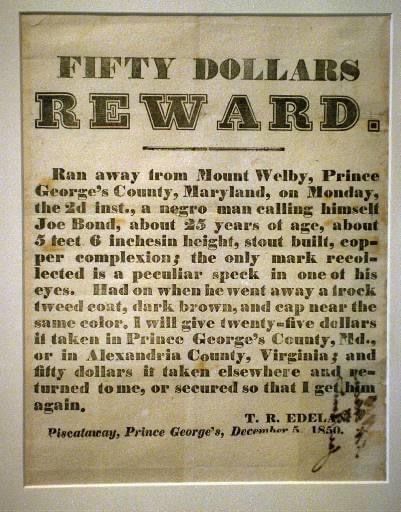
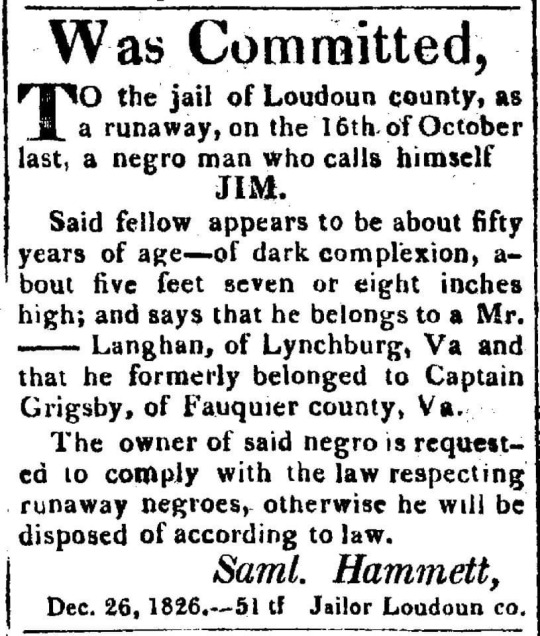


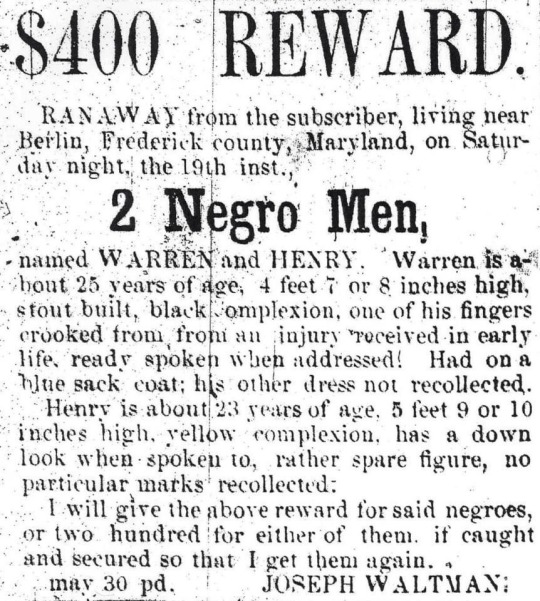
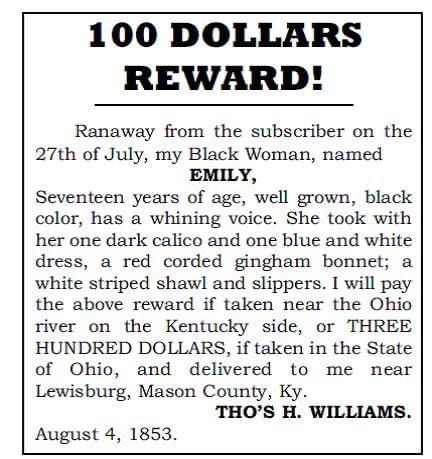
Because of them I can and will!!
15 notes
·
View notes
Photo

A Room with History
“So then how might one write the disaster, the terrible history carried in our gestures, residing in our bodies, marked on our flesh, etched onto our retinas?”
https://www.theparisreview.org/blog/2023/01/09/a-room-with-history/
#Saidiya Hartman#The Paris Review#The Blind Machine#Arts & Culture#dionne brand#history#map#middle passage#slavery
4 notes
·
View notes
Text
Watch "Learning the Middle Passage Through "Children of the Passage"" on YouTube
youtube
2 notes
·
View notes
Text
The Slave Ship Named Jesus
The Slave Ship Named Jesus
WordPress
Facebook
Twitter
Instagram
Goodreads
Medium
Tumblr
A Vessel of Untold Horrors
Little is known about this slave trading ship other than it was built in the Free City of Lubbock (Germany) circa 1520, acquired by the English circa 1540, and used mainly as a slave trading ship by the English from 1562 – 1568. One source states that this ship was under the direction of Admiral Sir…

View On WordPress
#America#American#Black Americans#Blog#Blogger#Blogging#British Empire#Christianity#Church#Church History#Colonialism#Culture#Death#Faith#Hannah Arendt#Imperialism#Jesus#Jesus Christ#Mental Health#Middle Passage#Never Forget#Olivet Theory#Prayer#Reading#Religion#Remember#Royal Navy#Ships#Slavery#Thoughts
4 notes
·
View notes
Text
How Should We Celebrate Juneteenth?
My take on Juneteenth. How it is intended, how it is perceived and how I am celebrating the day...
Ok, so we’ve got an official holiday for the day that many (black folk) have already been acknowledging, if not celebrating. That’s right, Juneteenth, a holiday commemorating the emancipation of those who had been enslaved in the United States is the longest running African-American holiday (originating in 1866 in Galveston, Texas).
And although it is marked as June 19th, today (June 20th) is…

View On WordPress
#Africa#African Americans#Diaspora#Emancipation#Emancipation Proclamation#Freedom#Juneteenth#Middle Passage#Slavery
2 notes
·
View notes
Text
Nathaniel Packard's role in the odious slave trade
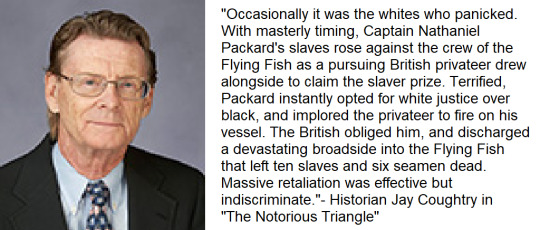
Page 158 of Coughtry's well-known 1981 book, Rhode Island and the African Slave Trade, 1700-1807 . He currently teaches at University of Nevada in Las Vegas.
Happy Black History Month! Slave trading runs in the Packard family as I've noted on this blog before. This article was a tough one to write because there are TWO Nathaniel Packards! While I tried to ask about this on /r/AskHistorians and received no reply, [1] I am operating with the educated assumption that the slave trading shown in the 1790s was from Nathaniel Packard, Jr., not his father, of the same name, Nathaniel Sr., as he will be called herein to distinguish from his son, who was the father of Samuel. I would further like to point out that Nathaniel Jr.'s mother was part of the Sterry family, and her first cousin, Cyprian, is the same one who Samuel worked with as a slave trader! [2] Not really a coincidence if you think about it.
Some may ask, how can you be so sure that this is the right Nathaniel? What if Nathaniel Sr. was the one involved in the trade of human beings? For one, I found out that Nathaniel Sr. was born in 1730, died in 1809 while his wife "Nabby" Abigail, was born in circa 1734, and she came to live with this Nathaniel in 1752, at age 18. [3] Her death in 1819, has not been confirmed. Nathaniel Sr. had a child with Abigail in 1769 (at age 39) named Elizabeth, in 1775 (at age 45) a child named Polly, and his child Nehemiah got married in 1777. [4] Furthermore, he probably wasn't engaged in slave trading in the 1790s, due to his age. After all, in 1790, Nathaniel Sr. would have been 61, and in 1799, he would have been 70. That seems a little old to be a captain of a ship, with anecdotal evidence suggesting that captains retired between 53 and 62. [5] I wish my evidence was stronger, but I decided to go with this article anyhow.
We do know that Nathaniel, my 2nd cousin eight times removed according to FamilySearch's "View my relationship" algorithm, was a captain, participating in the Revolutionary War, and reportedly having a similar career to his son, Samuel, owning land on North Main, Howard, and Try Streets in Providence. He was a master privateer during the revolution, captain of a sloop, called the America in 1776, and had a ship he was a captain of, the Sally, captured by the Royal Navy the same year. [6] That, and the story of the America, a ship appearing in thousands of results of the Naval Documents of the American Revolution Digital Edition, is for another day, whether I choose to write about it not. The age of Nathaniel, Jr., my third cousin seven times removed, is disputed. When he died in January 27, 1807, death notices recorded his age as 25, 35, or even 55. [7] At the time of his death, he owned a house on Providence's Main Street, with two houses and other buildings, and in 1801 he is noted as a sea captain, and as marrying a woman named Miss Margaret D. Paddleford in 1800. While he would have been born in 1782 if he was 25 years old in 1807, that means he would have been 15 years old in 1797, it is more likely he was 35 or 55, meaning that he would have been born in 1772 or 1752, although I am leaning more toward his birth in 1772, around the time his other siblings were born, than 1752.
Otherwise, what is known about his personal life is sketchy at best, even having a Find A Grave entry without a photograph of his gravestone. As such, writing about his story and its interconnection with the transatlantic slave trade is important, possibly even revealing more about him as a person. Whether he was a "man of wealth" like his brother, Samuel, or not, the fact remains that uncovering his connection to the slave trade is an important part of recognizing my collective past, the history of enslaved Black people, and much more. This article tries to counter what historians Erica Caple James and Malick W. Ghachem describe as "a still powerful tendency to marginalize or suppress the stories of black lives," with narratives about the past propagated as more marketable than alternatives that try to cut against the grain of “great man” history. [8]
Often Americans see themselves as exceptional people tied together by noble ideals, but this falls apart when history is taught fully and honestly "without omitting facts or telling outright lies" as Margaret Kimberley writes in Prejudential about the racial prejudice manifested by every single US president in history. For Nathaniel, the story starts in 1797. That year, he was the captain of four ships which crossed the Atlantic. The first was the Danish Harriet, which traveled to an unspecified region of Africa, from February to December, bringing with it 53 souls, most of which were men, and selling people in Havana, Cuba. Second was the Providence schooner, Abigail, owned by Ebenezer Macomber. Unlike the Harriet, which Nathaniel owned, this ship began its journey in Rhode Island. Similarly, it traveled to an unspecified region of Africa and sold 53 enslaved peoples, mostly men, in Havana. 11 souls perished during the voyage. [9]
The same year, and into 1798, he was captain, again, of the Harriet, now owned by J de Wint. It traveled once more to Havana, this time with 57 enslaved Black people on board. [10] A pattern emerges when combining data from slave voyages: from 1797 to 1800, Nathaniel, as captain or owner, transported 314 Africans in chains to Havana, Cuba, 85 who died during the Middle Passage, and 6+6 who may have died during the voyage or have a fate unknown, while 10-15 died in a slave revolt as described later in this article. Although after 1794 U.S. slave trade to Cuba was illegal, slave traders still made slave voyages to Havana, and "profited from their own Cuban plantations". This was amidst a societal change in Cuba, which changed from underdeveloped and unpopulated small settlements, ranches, and farms in 1763 to large tobacco and sugar plantations by 1838. This was accelerated by the import of hundreds of thousands of enslaved people during that time period, estimated at 400,000 by Hubert Aimes, benefiting Cuban planters, and a decree in 1789 which allowed foreigners and Spainards to sell as many enslaved people as they wanted in Cuba's ports. Land values rose as landowners, especially those involved in sugar production, gained more power and influence as the "sugar revolution" swept the island, with a 22.8% increase in enslaved people on the island from 1774 to 1827, and the planters depended on Spanish power more than ever to protect their investments. [11]
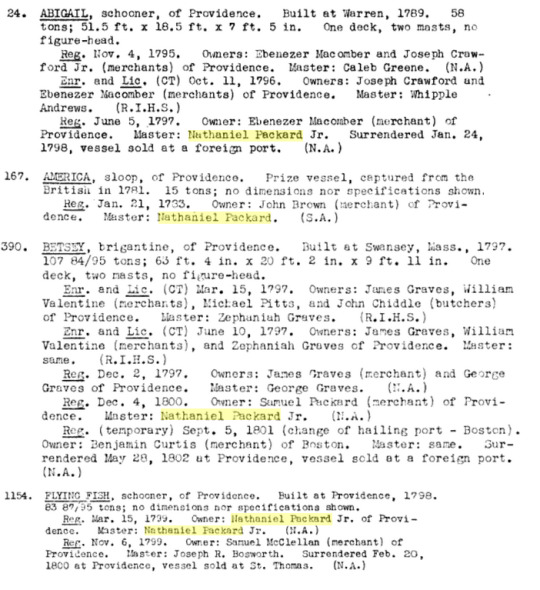
From pages 8, 60, 136, 360 of Ship Registers and Enrollments of Providence, Rhode Island, 1773-1939, Vol. 1, 1939, I believe the America was owned by his father.
The following year, he was captain, and owner, of the Flying Fish, a schooner from Providence. He co-owned the ship with Sam McClellan. This ship went to an unspecified part of Africa and sold 76 enslaved people in Havana, but they resisted with a "slave insurrection" noted. However, a voyage earlier that year with the same ship was more deadly, as almost half of enslaved people aboard died during the Middle Passage! [12] The ship had a tonnage of 85 tons, higher than some other ships.
It was then that Nathaniel would experience a revolt on the Flying Fish, which was transporting enslaved people. Ten of those on board would revolt, noted in the Newport Mercury. 10-15 enslaved people and 4-5 crewmen were killed in a failed revolt on this private armed vessel. While some sources said this was in 1800, the revolt was in late 1799, in actuality. [13] Coughtry, who I quoted at the beginning of this article, wrote:
Occasionally it was the whites who panicked. With masterly timing, Captain Nathaniel Packard's slaves rose against the crew of the Flying Fish as a pursuing British privateer drew alongside to claim the slaver prize. Terrified, Packard instantly opted for white justice over black, and implored the privateer to fire on his vessel. The British obliged him, and discharged a devastating broadside into the Flying Fish that left ten slaves and six seamen dead. Massive retaliation was effective but indiscriminate. On the few vessels that did experience slave revolts, captors and captives alike paid a high price for the latter's courage.
Nathaniel would be captain of the Betsey in 1800, Eliza in 1803, Minerva in 1794, Juno in 1805, and Dolphin in 1792. By 1800, he was married to Margaret Downs Paddleford, the daughter of well-off physician named Philip Paddleford and Margaret Downe. By the time they married, her mother had been dead or twenty years and Philip had married another woman, Elizabeth Macomber. The same year, friends of a 10-year-old Black male child, Peter Sharp, would testify against Nathaniel to the Providence Council. [14] In later years, in 1801 to 1802, he would be captain of the aforementioned slave ship, the Betsey. Only 94 of the enslaved people made it to the Americas and were sold in Havana, with 24 people perishing during the voyage across the Atlantic. [15] He did this while professing his religious ferment in his last will and testament, bequeathing money and personal property to his children and Margaret:

Will of Nathaniel in 1806, probated in 1807, noting his children and wife. [16]
Nathaniel was creating generational wealth, something which came in part from the trading of enslaved Black people. As Mary Elliott, curator on American slavery for The Smithsonian's National Museum of African American History and Culture noted in July 2019, some 12.5 million men, women and children of African descent were forced into the transatlantic slave trade, with the "sale of their bodies and the product of their labor [bringing]...the Atlantic world into being...[with] freedom was limited to maintain the enterprise of slavery and ensure power." She further said that Africans were forcibly migrated through the Middle Passage while the slave trade provided political power, wealth, and social standing for individuals, colonies, nation-states, and the church, while noting that enslaved black people "came from regions and ethnic groups throughout Africa." Although the U.S. international slave trade was made illegal in 1808, domestic slave trade increased, even as illegal slave trading continued internationally, with people such as my ancestor, Captain Samuel Packard, involved in it. What she next is significant to keep in mind:
Slavery affected everyone, from textile workers, bankers and ship builders in the North; to the elite planter class, working-class slave catchers and slave dealers in the South; to the yeoman farmers and poor white people who could not compete against free labor.
Furthermore, slavery itself was built and sustained by "black labor and black wombs", maintaining the economic system itself, with prosperity depending upon the "continuous flow of enslaved bodies", while a campaign of violence was waged against black people that "would rob them of an incalculable amount of wealth" following the end of Reconstruction in the 1870s. [17] Nathaniel, as well as his family, was part of this exploitation and it something that should be recognized, not hidden away or covered up as some people like to do with this history.
Notes
[1] On August 21, I asked "What age did sea captains, in the 18th century, retire?", adding in part "my common sense tells me he wouldn't be sailing a ship at that age and some scattered sources about this, when I did a quick search, did point to that." Unfortunately, a moderator removed the question for asking "basic facts," to which I wasn't happy (obviously), and was directed to another askhistorians thread. I posted a similar version of the question there, asking "Does anyone know what age did sea captains, in the 18th century (more specifically 1790s-early 1800s), retire?" And, just as I expected, I received NO reply. The lesson I took away from this is that you can't trust these forums to respond to you, and sometimes you just have to do the research yourself, with no help from anyone else, sad to say.
[2] Using this family relationship chart and explanatory post, I determined that Cyprian is the son of her uncle. This is because the brother of Abigail's father, Robert (1711-1789), was a man named Cyprian (1707-1772), who had a son named Cyprian (1752-1824), the one, and same, as the slave trader. So, that's the connection. Abigail and Nathaniel later had a daughter named Abigail, who married in 1784, and was named after her. In another interesting antecote, it appears that John Congdon, the father-in-law of 3rd cousin 7x removed, and the father of Abigail, the wife of Captain Samuel Packard, may have been a slave trader as well, as a Congdon is listed as captain of an unnamed slave trading vessel in 1762 and the Speedwell schooner from 1764 to 1765.
[3] Knowles, James D. Memoir of Roger Williams, the founder of the state of Rhode-Island (Boston: Lincoln, Edmands & Co., 1834), 432-433. Reprinted in "Notes on the Grave of Roger Williams," Apr. 20, 1907, Book Notes, Vol. 24, No. 8, p. 59. Relevant quote, reprinted from a letter in The American in 1819: "I am induced to lay before the public the following facts, communicated to me by the late Capt. Nathaniel Packard, of this town, about the year 1808...Captain Packard was son of Fearnot Packard, who lived in a small house, standing a little south of the house of Philip Allen, Esq. and about fifty feet south of the noted spring. In this house Captain Packard was born, in 1730, and died in 1809, being seventy-nine years old...Mrs. Nabby [Abigail] Packard, widow of Captain Packard, who is eighty-five years old, told me, this day, that her late husband had often mentioned the above facts to her; and his daughter, Miss Mary Packard, states, that her father often told her the same... Mrs. Nabby Packard, Nathaniel Packard's widow, told me this day, that she came to live where she now lives, when she was eighteen years old, which was sixty-seven years ago."
[4] "Rhode Island Town Births Index, 1639-1932", database, FamilySearch, 4 November 2020, Nathaniel Packard in entry for Elizabeth Sterry, 1857; "Rhode Island, Town Clerk, Vital and Town Records, 1630-1945," database with images, FamilySearch, 4 November 2020), Nathaniel Packard in entry for Elisabeth Sterry, 22 Nov 1857; citing Death, Providence, Providence, Rhode Island, United States, various city archives, Rhode Island; FHL microfilm 2,022,703; "Rhode Island, Town Clerk, Vital and Town Records, 1630-1945," database with images, FamilySearch, 4 November 2020, Nathanul Packard in entry for Polly Packard, 17 Dec 1858; citing Death, Providence, Providence, Rhode Island, United States, various city archives, Rhode Island; FHL microfilm 2,022,703; "Rhode Island Town Births Index, 1639-1932", database, FamilySearch, 4 November 2020), Nathaniel Packard in entry for Polly Packard, 1858; "Rhode Island Marriages, 1724-1916", database, FamilySearch, 22 January 2020), Nathaniel Packard in entry for Nehemiah Rhoads Packard, 1777.
[5] I'm referring to a 1931 New York Times story titled "37 YEARS AT SEA, CAPTAIN TO RETIRE; SHIP MASTER TO RETIRE" (noted a captain retiring at age 55), a U.S. Navy webpage saying you retire after age 62,and the life of Captain Edward Penniman (1831-1913) described by the National Park Service.
[6] White Jr., George Wylie. “A Rhode Islander Goes West to Indiana (1817-1818),” Rhode Island History, Vol I, No. 1, January 1942, p. 22; Lewisohn, Florence, The American Revolution's Second Front: Persons & Places Involved in the Danish West Indies & Some Other West Indian Islands (University of Texas, 1976), p. 12; "Captain Nathaniel Packard's Account Against the Rhode Island Sloop America, September 30, 1776," American Theatre from September 1, 1776, to October 31, 1776, Vol. 6, via Naval Documents of the American Revolution Digital Edition; "Owners of the Rhode Island Sloop America to Captain Nathaniel Packard, August 21, 1776," American Theatre from September 1, 1776, to October 31, 1776, Vol. 6, via Naval Documents of the American Revolution Digital Edition; "Lists of Prizes Condemned in the Vice Admiralty Court of Antigua, January 14, 1778," American Theatre from January 1, 1778 to March 31, 1778, Vol. 11, via Naval Documents of the American Revolution Digital Edition; "Governor Nicholas Cooke and John Jenckes to Captain Nathaniel Packard, February 3, 1776," American Theatre from January 1, 1776, to February 18, 1776, Vol. 3, via Naval Documents of the American Revolution Digital Edition; "Prizes Taken by British Ships in the Windward Islands, May 1, 1776," American Theatre from April 18, 1776, to May 8, 1776, Vol. 4, via Naval Documents of the American Revolution Digital Edition; "Journal of H.M. Sloop Pomona, Captain William Young, March 11, 1776," American Theatre from April 18, 1776, to May 8, 1776, Vol. 4, via Naval Documents of the American Revolution Digital Edition; "Potential Suspects," Gaspee Virtual Archives, accessed September 26, 2021. He was also said, according to the 1774 RI Colonial Census, to be living in Providence with his family, that year, and have tracts of Land in Providence as early as 1762. As a note on his FamilySearch profile proposes, he may have been involved in the Gaspee Affair in 1772.
[7] According to a note on his FamilySearch profile, a death notice was published in Providence Phoenix (Providence, R.I.), 31 Jan 1807, p. 3, col. 2, has an unclear date of either he was age 25, 35, or 55, with a reprint in the Columbian Centinel (Boston, Mass.), 4 Feb 1807, p. 2, giving his age as 25, the Salem Register (Salem, Mass.), 5 Feb 1807, p. 3, col. 3, giving his age as 35, the Independent Chronicle (Boston, Mass.), 5 Feb 1807, p. 3, giving his age as 25, and Newburyport Herald (Newburyport, Mass.), 6 Feb 1807, p. 3, col. 2, giving his age as 25. See the note for further sources of information beyond this sentence, mainly abstracting from probate records. He was also living in Providence in 1800, according to "United States Census, 1800," database with images, FamilySearch, accessed 26 September 2021, Nathanies Packard Jr, Providence, Providence, Rhode Island, United States; citing p. 211, NARA microfilm publication M32, (Washington D.C.: National Archives and Records Administration, n.d.), roll 45; FHL microfilm 218,680, and his marriage is noted here: "Massachusetts Marriages, 1695-1910, 1921-1924", database, FamilySearch, 28 July 2021, Nathaniel Packard, 1800.
[8] Erica Caple James and Malick W. Ghachem, "Black Histories Matter," Perspectives of History, Sept. 1, 2015, accessed September 26, 2021.
[9] Trans-Atlantic Slave Trade - Database, "Voyage 35224, Harriet (1797)", with entry also in Peoples of the Historical Slave Trade database and another entry here; Trans-Atlantic Slave Trade - Database, "Voyage 36677, Abigail (1797)", with entry also in Peoples of the Historical Slave Trade database.
[10] Trans-Atlantic Slave Trade - Database, "Voyage 35225, Harriet (1798)", with entry also in Peoples of the Historical Slave Trade database.
[11] Franklin Knight, "The Transformation of Cuban Agriculture, 1763-1838" in Caribbean Slave Society and Economy: A Student Reader (ed. Hilary Beckles and Verene Shepherd, New York: The New Press, 1991), 69, 72, 74-78.
[12] Trans-Atlantic Slave Trade - Database, "Voyage 36727, Flying Fish (1799)", with entry also in Peoples of the Historical Slave Trade database; "Voyage 36726, Flying Fish (1799)", with entry also in Peoples of the Historical Slave Trade database and here.
[13] Eric Robert Taylor, If We Must Die: Shipboard Insurrections in the Era of the Atlantic Slave Trade, Vol. 38, 2009, p. 209; Naval Documents Related to the Quasi-war Between the United States and France: From Dec. 1800 to Dec. 1801, United States. Office of Naval Records and Library, 1935, p 397.
[14] U.S., Newspaper Extractions from the Northeast, 1704-1930 for Margaret D Paddleford, Massachusetts, Columbian Centinel, Marriage, Nabor-Ryonson, :Newspapers and Periodicals. American Antiquarian Society, Worcester, Massachusetts; Massachusetts, U.S., Compiled Birth, Marriage, and Death Records, 1700-1850 for Margaret Downs Padelford, Taunton; Massachusetts, U.S., Town Marriage Records, 1620-1850, Vital Records of Taunton, Margaret Downs of T. and Nathaniel Packard of Providence, Feb. 12, 1800, in T. Intention not recorded; Massachusetts, U.S., Wills and Probate Records, 1635-1991 for Philip Padelford, Bristol, Probate Records, Padeford, James - Paine, Sarah, pages 144 and 145; via page 11 of Descendants of Jonathan Padelford, 1628-1858 chart, where it almost looks like Margaret Brown; Children Bound to Labor: The Pauper Apprentice System in Early America, 2011, p. 43.
[15] Trans-Atlantic Slave Trade - Database, "Voyage 36753, Betsey (1802)", with entry also in Peoples of the Historical Slave Trade database.
[16] Will of Nathaniel Packard, 1807, Rhode Island, U.S., Wills and Probate Records, 1582-1932 for Nathaniel Packard, Providence, Wills and Index, Vol 10-11 1805-1815, Rhode Island, District and Probate Courts.
[17] Of note is what one writer, Nancy Isenberg, argued: that Americans believe in social mobility, but have a "long list of slurs and of terms" for people, and noted that "the discussion of class throughout our history has forced on the centrality of land and land ownership, as well as what I call breeds, or breeding", concepts which come from the British, and notes that another English idea is that "the wealth and the strength of the nation are based on the size of its population" and goes onto say that the English were focused on bloodlines, lineage, and pedigree, even more on inheritance, while saying that class has a specific geography with class-zoned neighborhoods, and stated that convincing people that poor whites are enemies of black Americans is a way to divide people, concluding that "not only are we not a post-racial society, we are certainly not a post-class society."
Note: This was originally posted on Feb. 6, 2023 on the main Packed with Packards WordPress blog (it can also be found on the Wayback Machine here). My research is still ongoing, so some conclusions in this piece may change in the future.
© 2023 Burkely Hermann. All rights reserved.
#packards#slave trade#slavery#enslaved people#black history matters#black lives matter#rhode island#providence#18th century#19th century#havana#cuba#spain#slave revolt#slave rebellion#middle passage#slaveowners#reconstruction#nancy isenberg
0 notes
Link
Sexypink - The American Artist Ayana V Jackson comes to Trinidad and Tobago to influence some of her work.
#art#art and design#exhibitions#culture#design#sexypink/Ayana V Jackson#sexypink/Performance and Photography#sexypink/Foreign Artists in Caribbean spaces#tumblr/Ayana V Jackson#Photography#performance#slavery#Middle Passage
0 notes
Text
The Progressive Era roots of environmental racism | Grist
Africatown, the only U.S. community established by West Africans who survived the Middle Passage, reveals a longer history of environmental injustice.
— Read on grist.org/race/africatown-excerpt-progressive-era-environmental-justice/
View On WordPress
#African/Black experience#Africatown#Clotilde#corruption#genocide#Middle passage#murder#protest#racial profiling#racism#Slavery#terrorism#War on Afrikans
0 notes
Text

Fuck it. Crochet cartilaginous stingray skeleton
#id in alt#that’s enough hairpin lace experimenting for now I think akskdk. fucked around found out my work here is done#it’s not anatomically accurate but it’s not like. wildly Inaccurate either we are middle of the road as always. love that for me. anyways#she’s my baby <3333#crochet#amigurumi#fiber arts#hairpin lace#my work#i think this qualifies as amigurumi??? I’m not actually sure. oh well taxonomic difficulties are a rite of passage
3K notes
·
View notes
Text
“Americans believe in the reality of ‘race’ as a defined, indubitable feature of the natural world. Racism—the need to ascribe bone-deep features to people and then humiliate, reduce, and destroy them—inevitably follows from this inalterable condition. In this way, racism is rendered as the innocent daughter of Mother Nature, and one is left to deplore the Middle Passage or the Trail of Tears the way one deplores an earthquake, a tornado, or any other phenomenon that can be cast as beyond the handiwork of men.”
#between the world and me#ta nehisi coates#book quotes#bookblr#nonfiction#americans#reality#race#racism#mother nature#middle passage#trail of tears#humanity
0 notes
Text
what the fuck do you mean the she looks so perfect music video is 10 years old today
#i’m so fucking old#i was in MIDDLE SCHOOL when that came out#stop the passage of time NOW!#5 seconds of summer#5sos
87 notes
·
View notes
